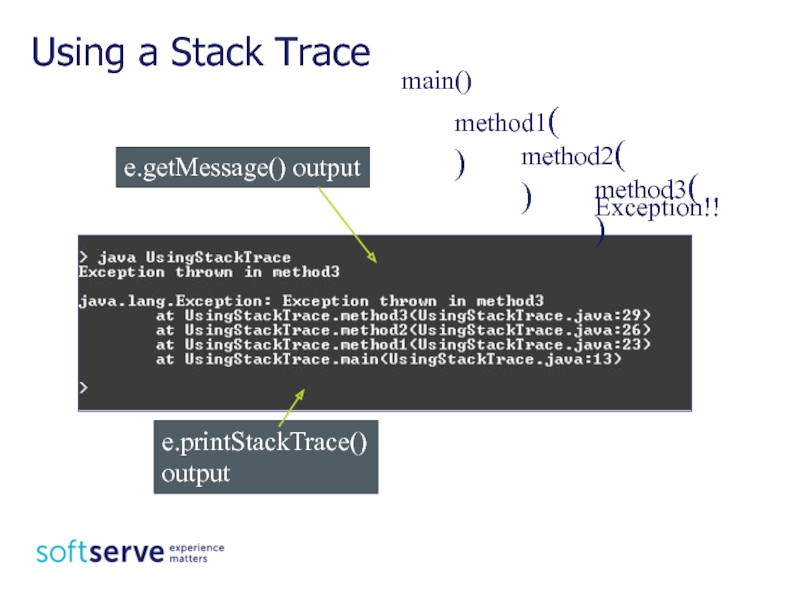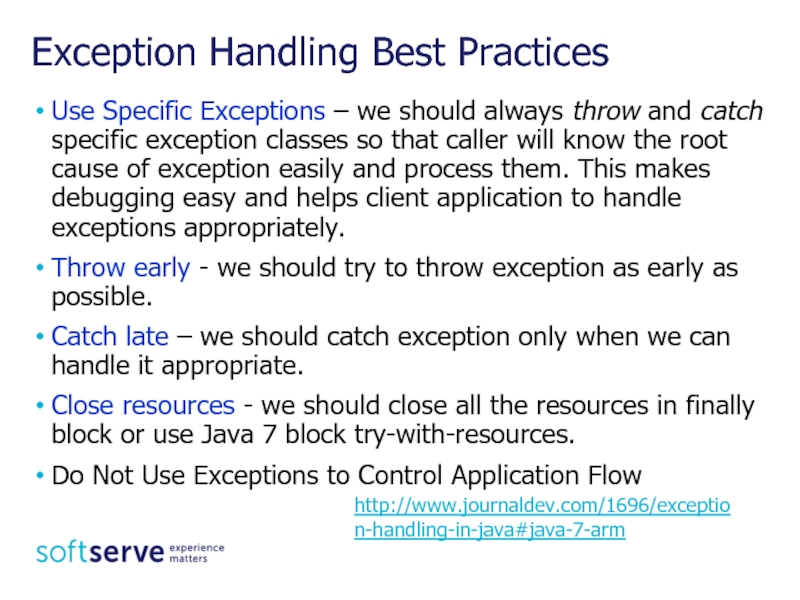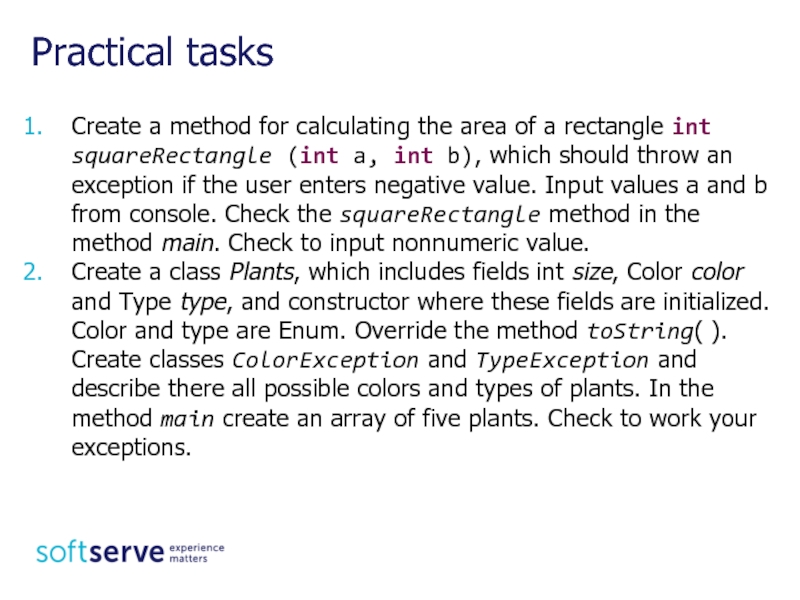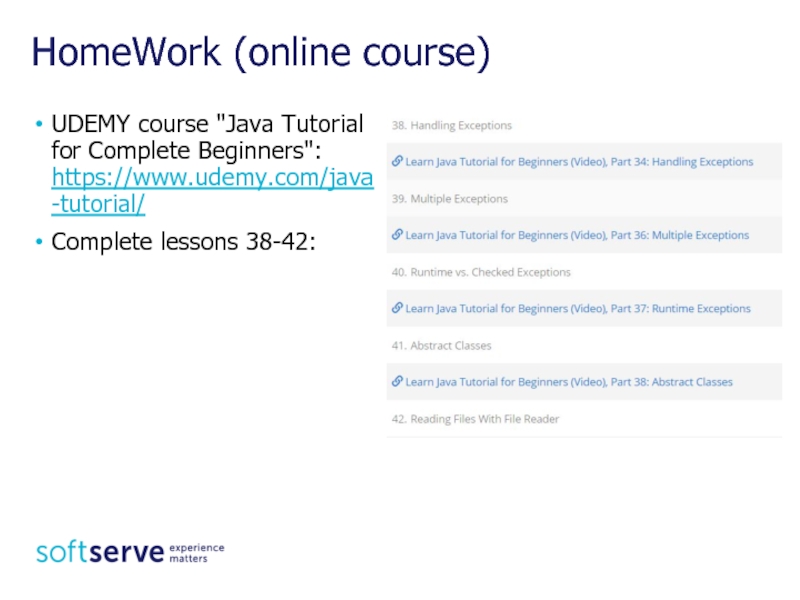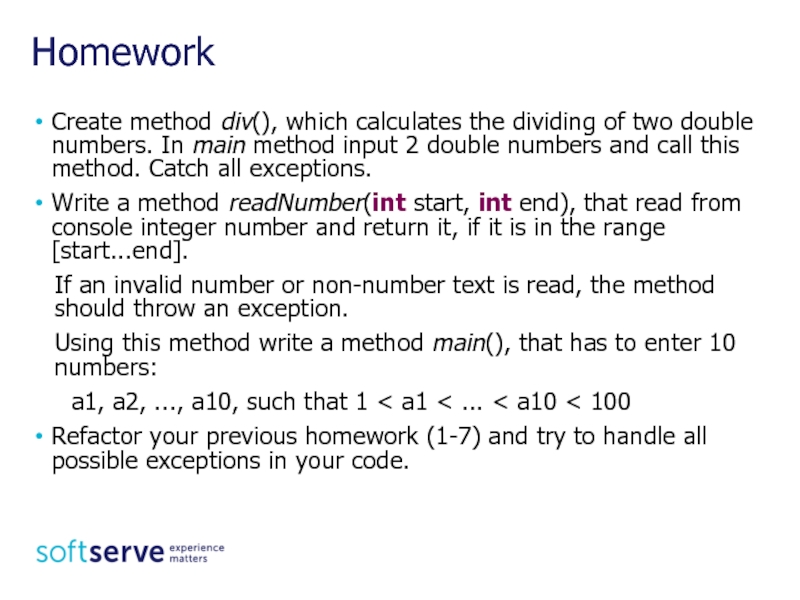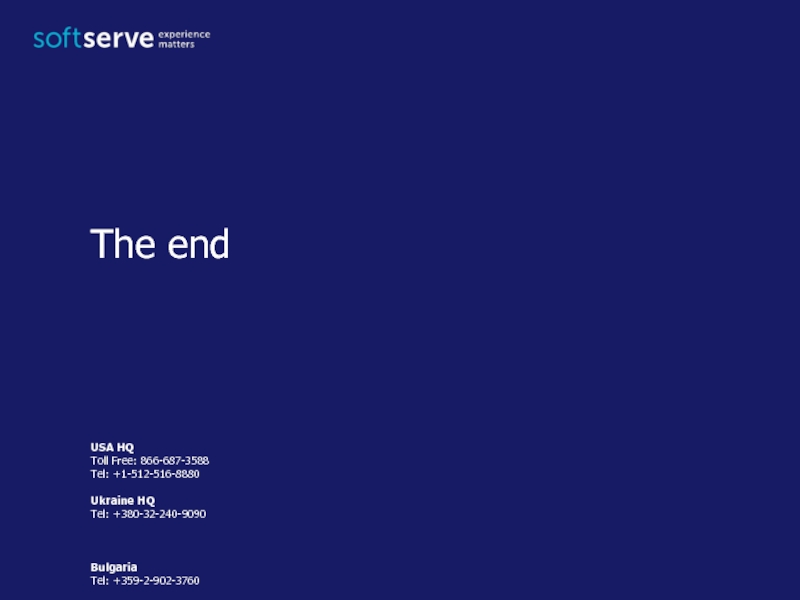- Главная
- Разное
- Дизайн
- Бизнес и предпринимательство
- Аналитика
- Образование
- Развлечения
- Красота и здоровье
- Финансы
- Государство
- Путешествия
- Спорт
- Недвижимость
- Армия
- Графика
- Культурология
- Еда и кулинария
- Лингвистика
- Английский язык
- Астрономия
- Алгебра
- Биология
- География
- Детские презентации
- Информатика
- История
- Литература
- Маркетинг
- Математика
- Медицина
- Менеджмент
- Музыка
- МХК
- Немецкий язык
- ОБЖ
- Обществознание
- Окружающий мир
- Педагогика
- Русский язык
- Технология
- Физика
- Философия
- Химия
- Шаблоны, картинки для презентаций
- Экология
- Экономика
- Юриспруденция
Exception. Java Core презентация
Содержание
- 1. Exception. Java Core
- 2. Agenda Exception in Java Exception Class Hierarchy
- 3. Errors are Natural Any software solution faces
- 4. Lots of error checking in code makes
- 5. Exception – is an event, which occurs
- 6. Exception Class Hierarchy Separate the error checking
- 7. Exceptions are the result of problems in
- 8. Exception Class Hierarchy (not complete)
- 9. Exception Class Hierarchy 1. Checked exceptions subclasses
- 10. Exception Handling There are five key words
- 11. The programmer wraps the error-prone code inside
- 12. Java uses exception handling Format of code:
- 13. int doSomthing(int n) { try
- 14. Code fragment may contain several problem places.
- 15. try { // Malicious code
- 16. Exception Handling The new design is now
- 17. public int div() { BufferedReader br =
- 18. A finally clause is executed even if
- 19. Java 7 Resource Management public class MyResource
- 20. If a method can throw an exception,
- 21. For example double safeSqrt(double x)
- 22. void foo(double x) { double result;
- 23. You can throw exception using the throw
- 24. Summary: Dealing with Checked Exceptions
- 25. Defining new exception You can subclass RuntimeException
- 26. Create checked exception – MyException // Creation
- 27. public class ExampleException { static void
- 28. If you create your own exception class
- 29. Limitation on overridden methods Overridden method can't
- 30. The exception keeps being passed out to
- 31. public static void method1() throws MyException
- 32. method1() and method2() require throws declarations since
- 33. // The getMessage and printStackTrace methods public
- 34. Using a Stack Trace
- 35. Exception Handling Best Practices Use Specific Exceptions –
- 36. Practical tasks Create a method for calculating
- 37. HomeWork (online course) UDEMY course "Java Tutorial for Complete Beginners": https://www.udemy.com/java-tutorial/ Complete lessons 38-42:
- 38. Homework Create method div(), which calculates the
- 39. The end
Слайд 2Agenda
Exception in Java
Exception Class Hierarchy
Exception Handling
Statements throws and throw
Creating own Exception
Stack
Practical tasks
Слайд 3Errors are Natural
Any software solution faces errors: invalid user input, broken
Errors break normal flow of the program execution and may lead to fatal results in case if not handled properly
General Kinds of Programming Errors
Compilation Errors - prevent program from running
Run-time errors - occur while program runs
Logic Errors - prevent program from doing what it is intended to do
Слайд 4Lots of error checking in code makes the code harder to
more complex
more likely that the code will have errors!
Add error checking to the following code
BufferedReader br = new BufferedReader(
new InputStreamReader(System.in));
int k = Integer.parseInt(br.readLine( )); // ???
int i = 4; int j = 0;
System.out.println("Result: "+ (i / j)); // ???
int[ ] a = new int[2];
a[2] = 0; // ???
Exception in Java
Слайд 5Exception – is an event, which occurs during the execution of
Exception handling is convenient way to handle errors
What is Exception and Exception Handling?
normal flow:
exception handling:
exception
Слайд 6Exception Class Hierarchy
Separate the error checking code from the main program
Слайд 7Exceptions are the result of problems in the program.
Errors represent more
Exceptions are divided into three types:
Checked exceptions;
Unchecked exceptions, include Errors;
RuntimeExceptions, a subclass of Exception.
Checked exceptions are errors that can and should be handled in the program.
This type includes all subclasses of Exception (but not RuntimeException).
Unchecked exceptions does not require mandatory handling.
Exception Class Hierarchy
Слайд 9Exception Class Hierarchy
1. Checked exceptions
subclasses of Exception
recovery should be possible for
your code must
include try-catch blocks for these or the compiler will reject your program (e.g. IOException)
add throws to method declaration
2. Unchecked exceptions
subclasses of RuntimeException
exceptions of this type usually mean that your program should terminate
the compiler does not force you to include try-catch blocks for these kinds of exceptions (e.g. ArithmeticException)
Слайд 10Exception Handling
There are five key words in Java for working with
try - this keyword is used to mark the beginning of a block of code that can potentially lead to an error.
catch - keyword to mark the beginning of a block of code designed to intercept and handle exceptions.
finally - keyword to mark the beginning of a block of code, which is optional. This block is placed after the last block 'catch'. Control is usually passed to block 'finally' in any case.
throw - helps to generate exceptions.
throws - keyword that is prescribed in the method signature, and is indicating that the method could potentially throw an exception with the specified type.
Слайд 11The programmer wraps the error-prone code inside a try block.
If an
the block can use information stored in the e object
After the catch block (the catch handler) has finished, execution continues after the catch block (in more-statements).
execution does not return to the try block
If the try block finishes successfully without causing an exception, then execution skips to the code after the catch block
Exception Handling
Слайд 12Java uses exception handling
Format of code:
statements;
try {
code...;
}
catch (Exception-type e) {
Exception in Java
a try block
a catch block
Слайд 13int doSomthing(int n) {
try {
// If
return 100 / n;
} catch (ArithmeticException e) {
// catch exception by class name
System.out.println("Division by zero");
return 0;
}
}
Exception Handling
Слайд 14Code fragment may contain several problem places.
For example, except for division
Need to create two or more operators catch for each type of exception.
They are checked in order.
If an exception is detected at the first processing unit, it will be executed, and the remaining checks will be skipped.
If using multiple operators catch handlers subclasses exceptions should be higher than their handlers superclasses.
Many catch blocks
Слайд 15try {
// Malicious code
} catch (ExceptionType1 e1) {
} catch (ExceptionType2 e2) {
// Exception handling for the class ExceptionType2
} catch (Exception allAnotherExceptions) {
// Handle all exceptions previously untreated
} catch (Throwable allAnotherErrorsAndExceptions) {
/* Process all errors and exceptions that have
not been treated so far. Bad because
it also handled Error- classes */
}
Exception Handling
Слайд 16Exception Handling
The new design is now available in Java 7, which
try {
...
} catch( IOException | SQLException ex ) {
logger.log(ex);
throw ex;
}
This is useful when error handling is no different.
Слайд 17public int div() {
BufferedReader br = new BufferedReader(
new InputStreamReader(System.in));
try {
int k = Integer.parseInt(br.readLine());
return n / k;
} catch (NumberFormatException | IOException e) {
return -1;
} catch (ArithmeticException e) {
return -2;
} catch (Exception e) {
return -3; }
}
Exception Handling
This code does not compile
try {
... }
catch (Exception e) {
return -1;
}
catch (ArithmeticException e) {
return -2;
}
Слайд 18A finally clause is executed even if a return statement is
An uncaught or nested exception still exits via the finally clause.
Typical usage is to free system resources before returning, even after throwing an exception (close files, network links)
Finally
try {
// Protect one or more statements here
}
catch(Exception e) {
// Report from the exception here
}
finally {
// Perform actions here whether
// or not an exception is thrown
}
Слайд 19Java 7 Resource Management
public class MyResource implements AutoCloseable{
@Override
Java 7 has introduced a new interface java.lang.AutoCloseable which is extended by java.io.Closeable interface. To use any resource in try-with-resources, it must implement AutoCloseable interface else java compiler will throw compilation error.
try (MyResource sr =
new MyResource()) {
//doSomething with sr
}
MyResource sr =
new MyResource();
try {
//doSomething with sr
} finally {
if (sr == null) {
sr.close();
} }
Слайд 20If a method can throw an exception, which he does not
Also there is the design throws, which lists the types of exceptions.
Except Error, RuntimeException, and their subclasses.
Statement throws
Слайд 21For example
double safeSqrt(double x)
throws ArithmeticException {
if
throw new ArithmeticException();
return Math.sqrt(x);
}
Statement throws
Слайд 22void foo(double x) {
double result;
try {
result =
} catch (ArithmeticException e) {
System.out.println(e);
result = -1;
}
System.out.println("result: " + result);
}
Statement throws
Слайд 23You can throw exception using the throw statement
try {
MyClass
if (myClass == null) {
throw new NullPointerException("Messages");
}
} catch (NullPointerException e) {
// TODO
e.printStackTrace( );
System.out.println(e.getMessage( ));
}
Statement throw
Слайд 25Defining new exception
You can subclass RuntimeException to create new kinds of
Or subclass Exception for new kinds of checked exceptions.
Why? To improve error reporting in your program.
Слайд 26Create checked exception – MyException
// Creation subclass with two constructors
class MyException
// Classic constructor with a message of error
public MyException(String msg) {
super(msg);
}
// Empty constructor
public MyException() { }
}
Creating own checked exception
Слайд 27public class ExampleException {
static void doSomthing(int n) throws MyException {
int a = 100 / n;
} else {
// Creation and call exception
throw new MyException("input value is below zero!");
} }
public static void main(String[ ] args) {
try { // try / catch block is required
doSomthing(-1);
} catch (MyException e1) {
System.err.print(e1);
} } }
Creating own checked exception
Слайд 28If you create your own exception class from RuntimeException, it’s not
class MyException extends RuntimeException { }
public class ExampleException {
static void doSomthing(int n) {
throw new MyException( );
}
public static void main(String[ ] args) {
DoSomthing(-1); // try / catch do not use
}
}
Creating own unchecked exception
Слайд 29Limitation on overridden methods
Overridden method can't change list of exceptions declared
We can add new exception to child class when it is a descendant of an exception from the parent class or it is a runtime exception
public class Base {
public void doSomething() throws IllegalAccessException{}
}
public class Child extends Base {
@Override
public void doSomething() throws NoSuchMethodException {}
}
Слайд 30The exception keeps being passed out to the next enclosing block
a suitable handler is found;
or there are no blocks left to try and the program terminates with a stack trace
If no handler is called, then the system prints a stack trace as the program terminates
it is a list of the called methods that are waiting to return when the exception occurred
very useful for debugging/testing
The stack trace can be printed by calling printStackTrace()
Stack Trace
Слайд 31 public static void method1() throws MyException {
method2();
}
method3();
}
public static void method3() throws MyException {
throw
new MyException("Exception thrown in method3" );
}
} // end of UsingStackTrace class
Stack Trace
Слайд 32method1() and method2() require throws declarations since they call a method
The compiler will reject the program at compile time if the throws are not included
Exception is a non-runtime (checked) exception
Stack Trace
Слайд 33// The getMessage and printStackTrace methods public static void main( String[] args)
try {
method1();
} catch (Exception e) {
System.err.println(e.getMessage() + "\n");
e.printStackTrace();
}
}
Using a Stack Trace
Слайд 35Exception Handling Best Practices
Use Specific Exceptions – we should always throw and
Throw early - we should try to throw exception as early as possible.
Catch late – we should catch exception only when we can handle it appropriate.
Close resources - we should close all the resources in finally block or use Java 7 block try-with-resources.
Do Not Use Exceptions to Control Application Flow
http://www.journaldev.com/1696/exception-handling-in-java#java-7-arm
Слайд 36Practical tasks
Create a method for calculating the area of a rectangle
Create a class Plants, which includes fields int size, Color color and Type type, and constructor where these fields are initialized. Color and type are Enum. Override the method toString( ). Create classes ColorException and TypeException and describe there all possible colors and types of plants. In the method main create an array of five plants. Check to work your exceptions.
Слайд 37HomeWork (online course)
UDEMY course "Java Tutorial for Complete Beginners": https://www.udemy.com/java-tutorial/
Complete lessons
Слайд 38Homework
Create method div(), which calculates the dividing of two double numbers.
Write a method readNumber(int start, int end), that read from console integer number and return it, if it is in the range [start...end].
If an invalid number or non-number text is read, the method should throw an exception.
Using this method write a method main(), that has to enter 10 numbers:
a1, a2, ..., a10, such that 1 < a1 < ... < a10 < 100
Refactor your previous homework (1-7) and try to handle all possible exceptions in your code.
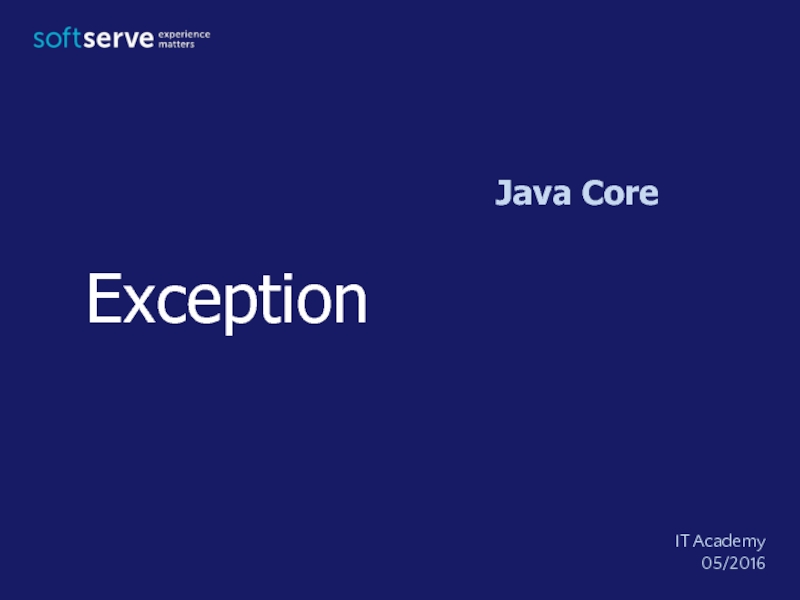
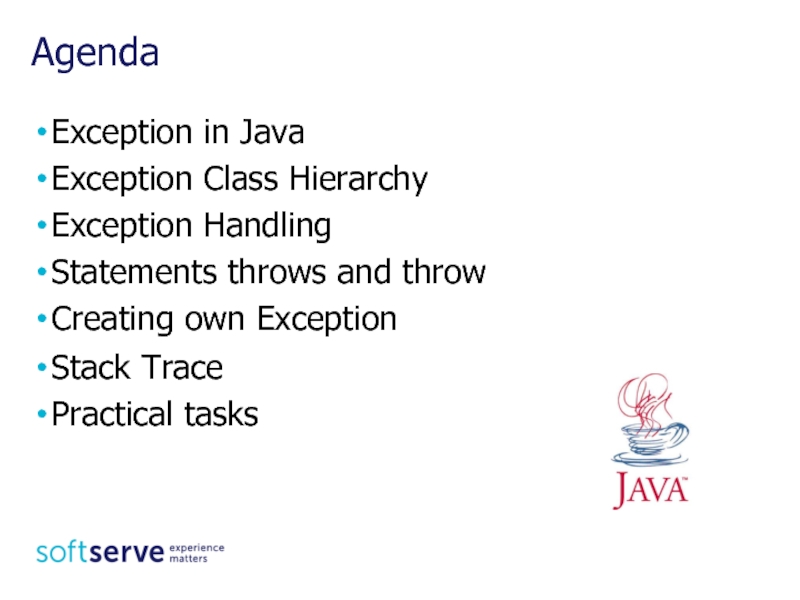
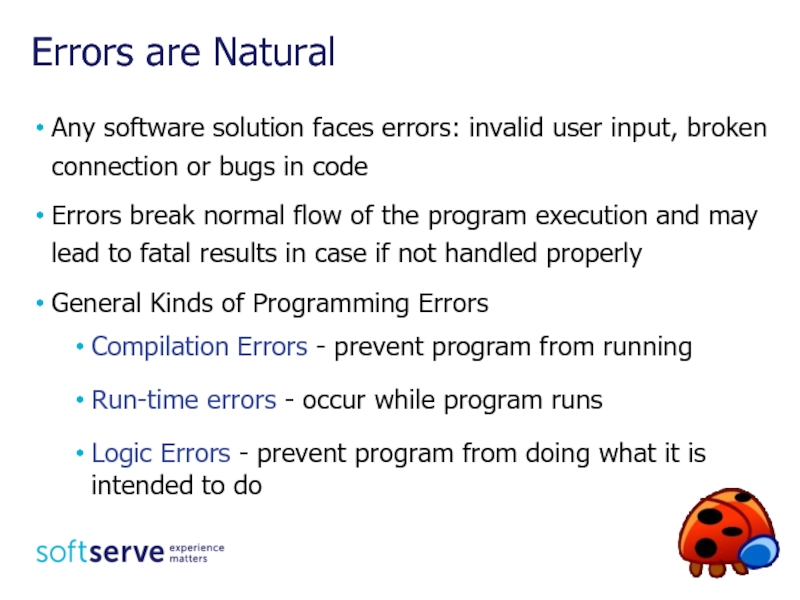
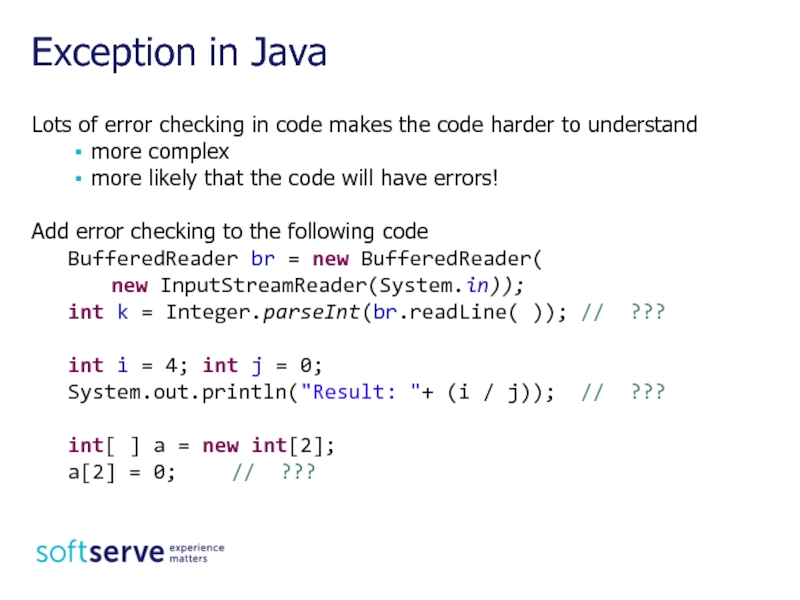
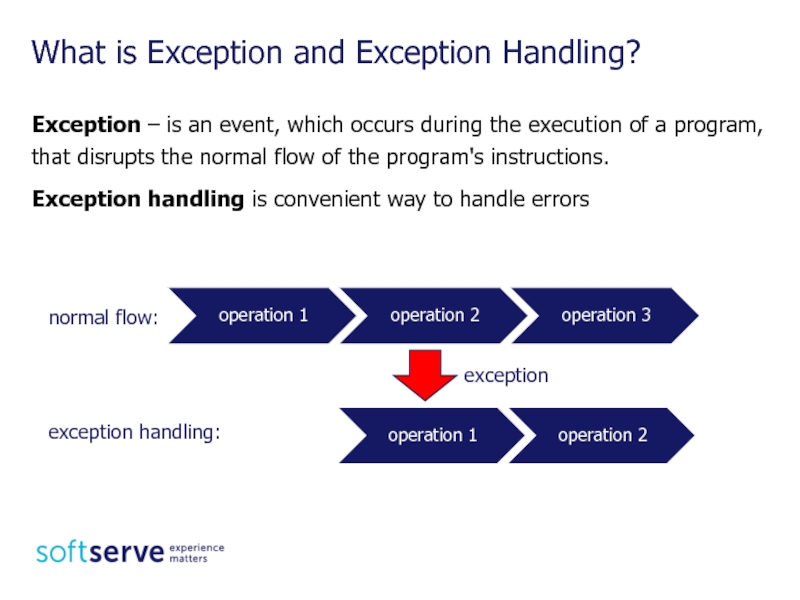
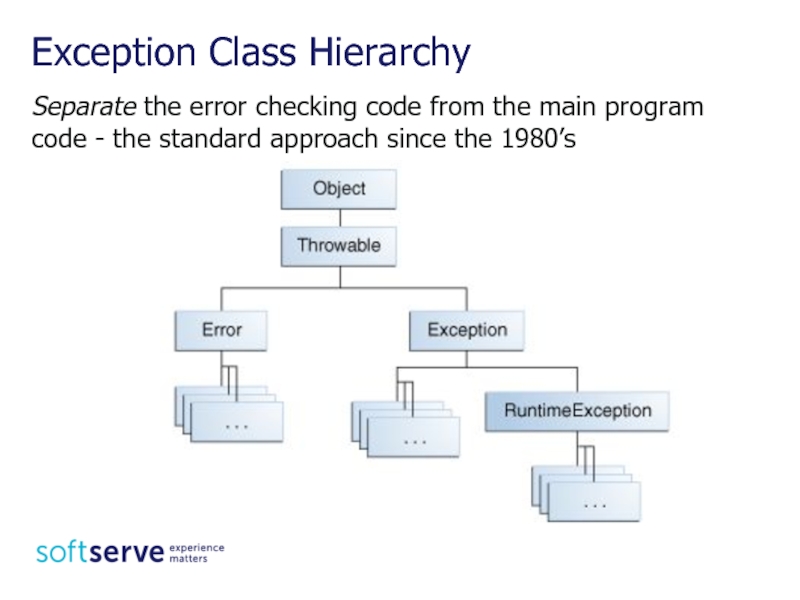
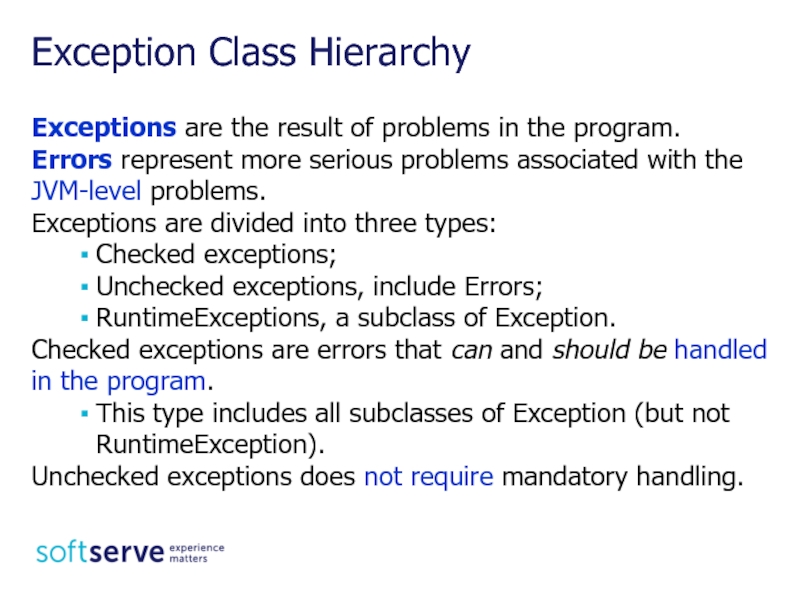
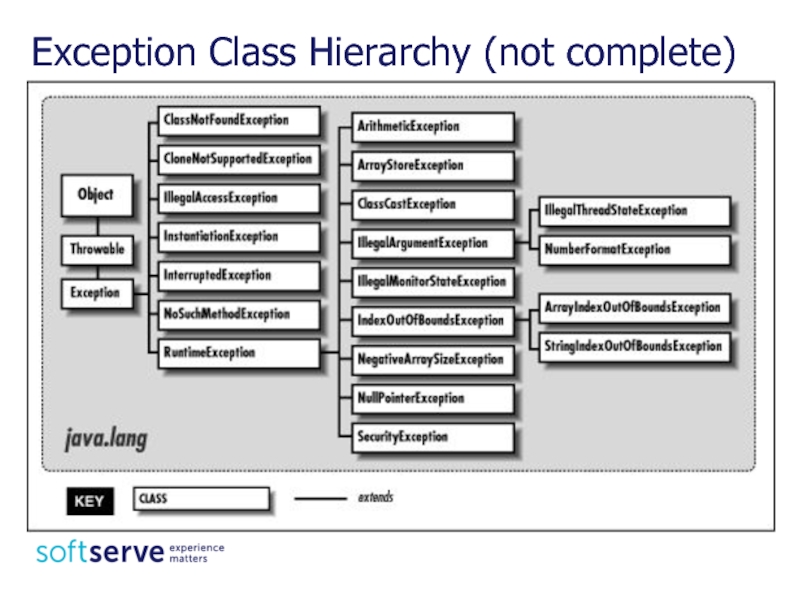
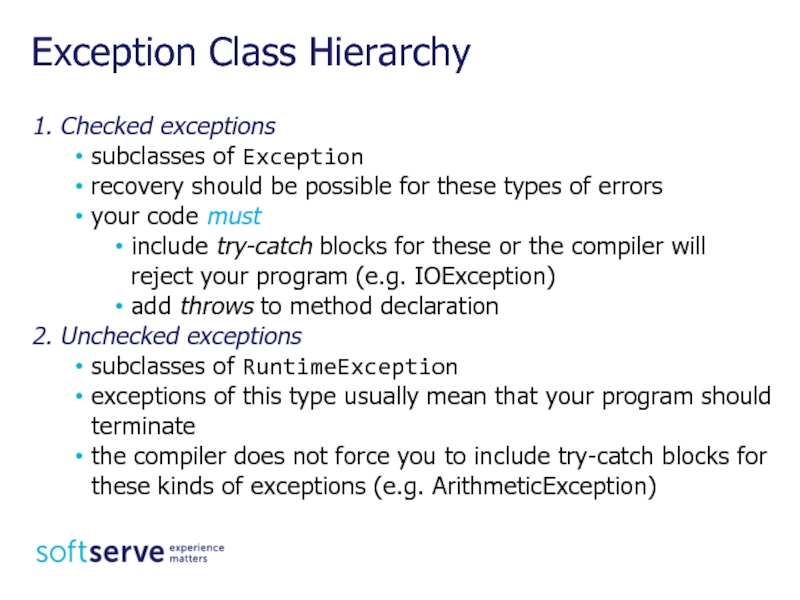
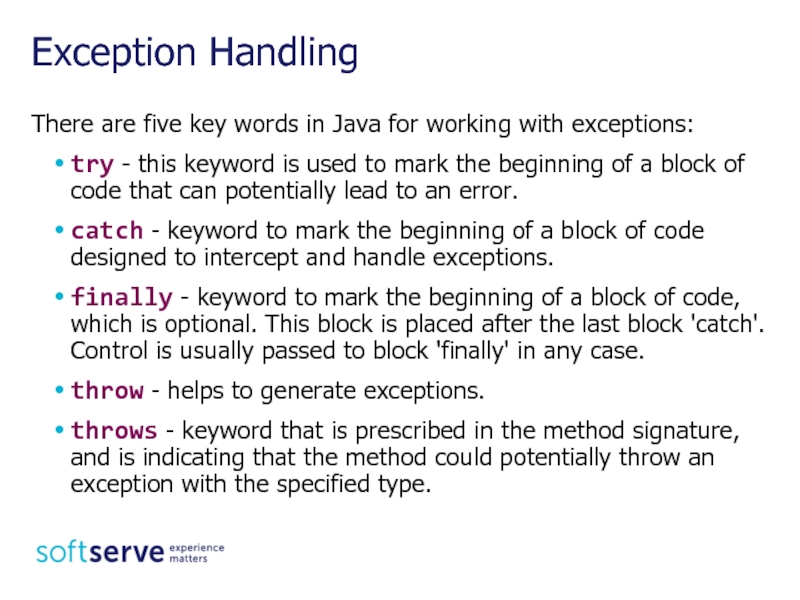
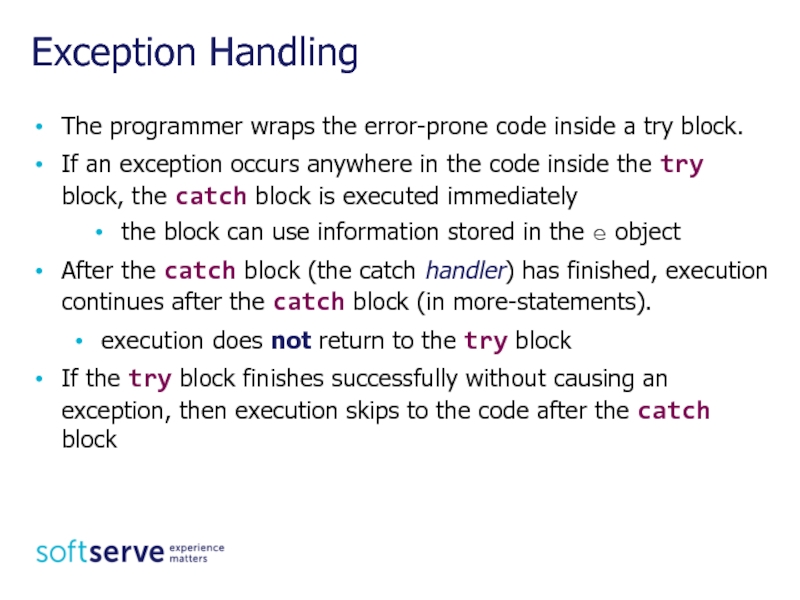
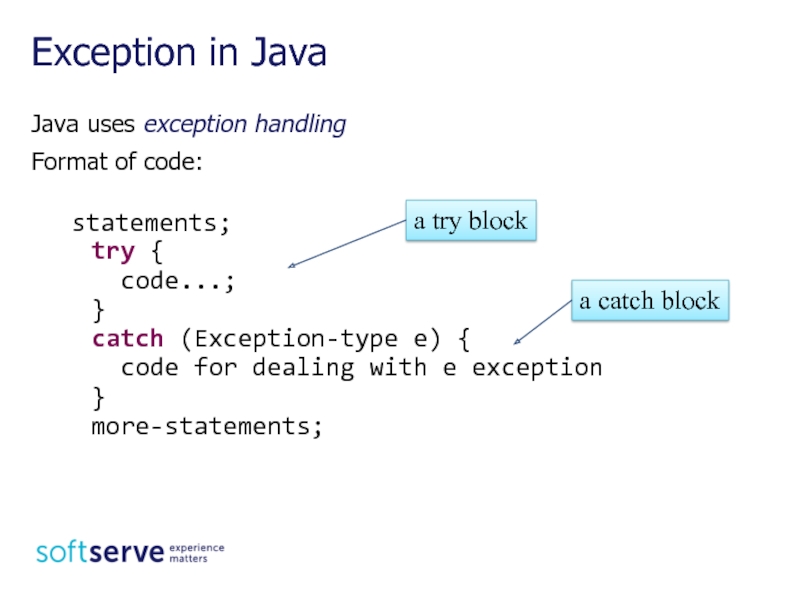
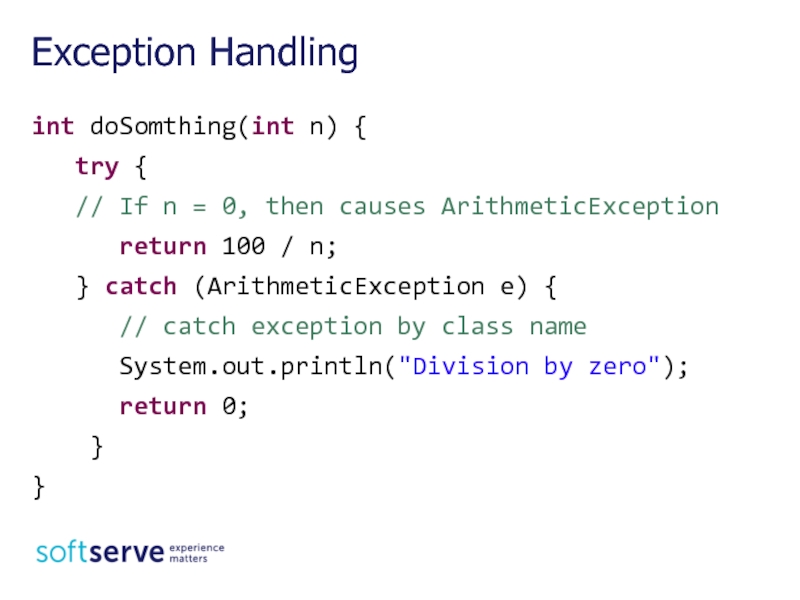
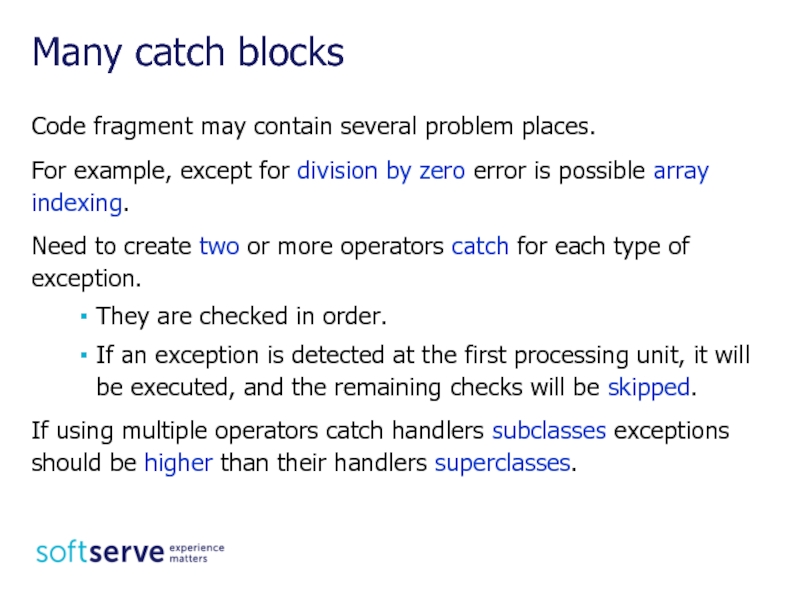
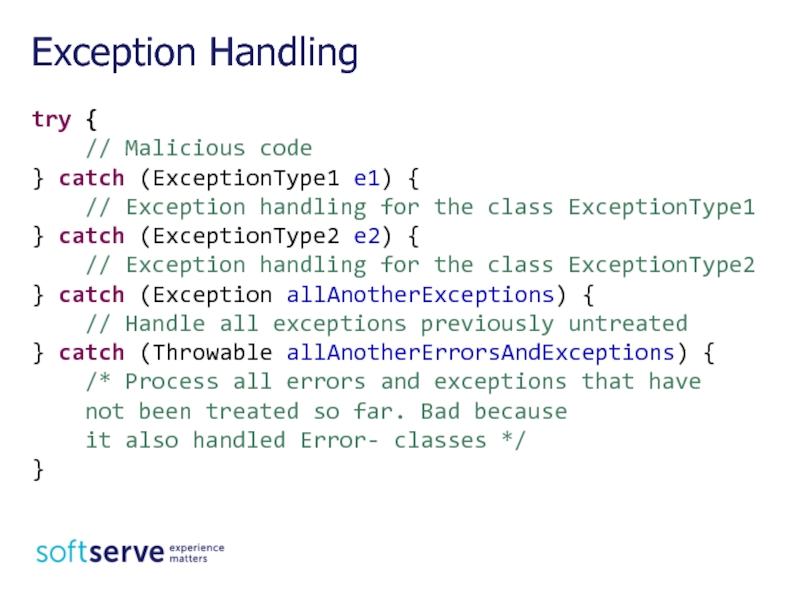
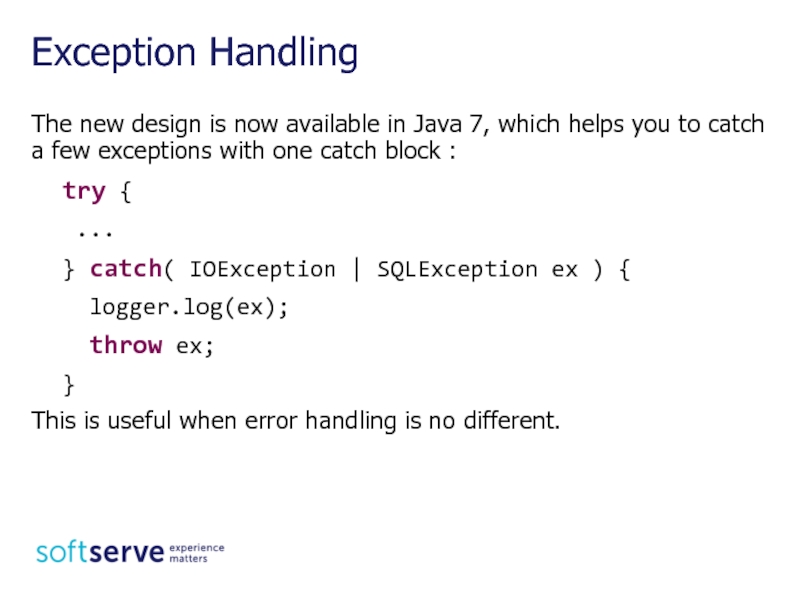
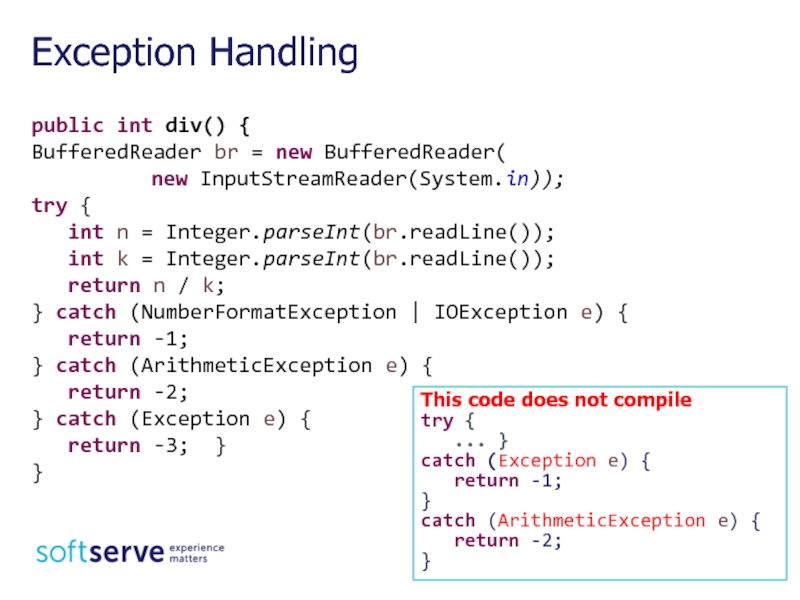
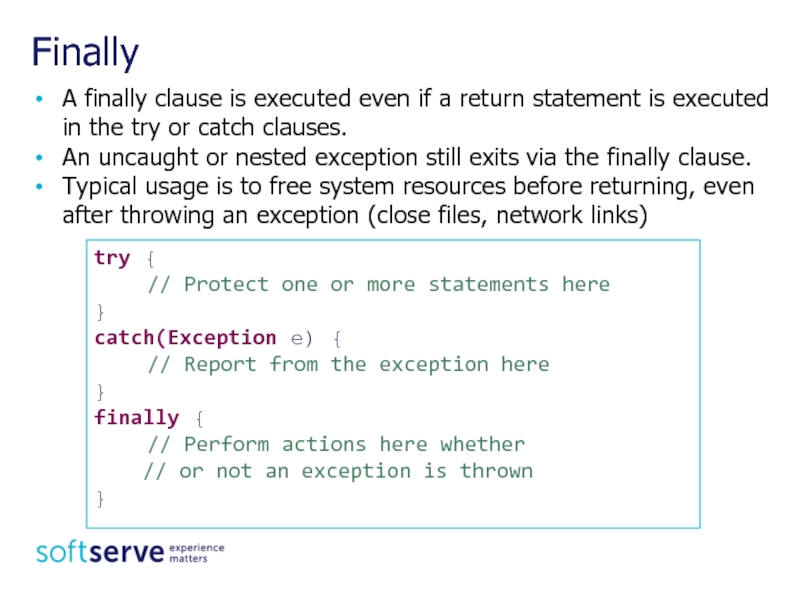
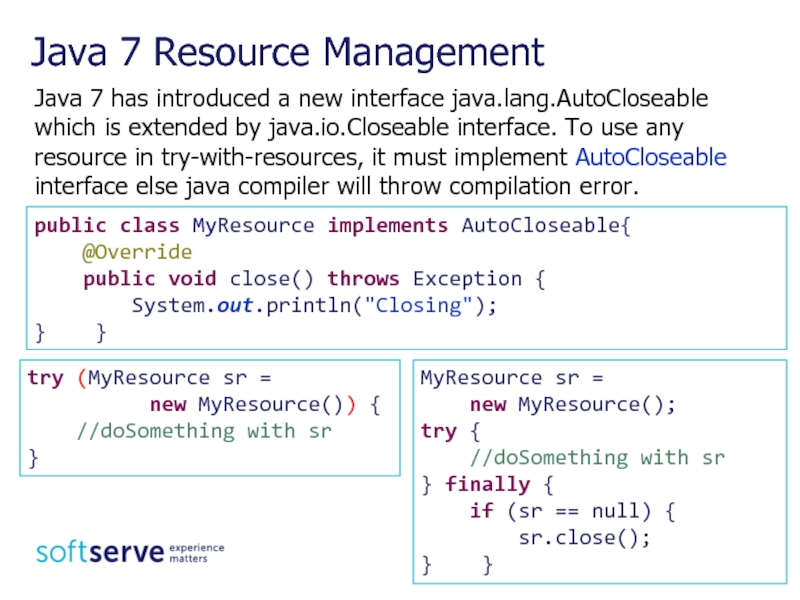
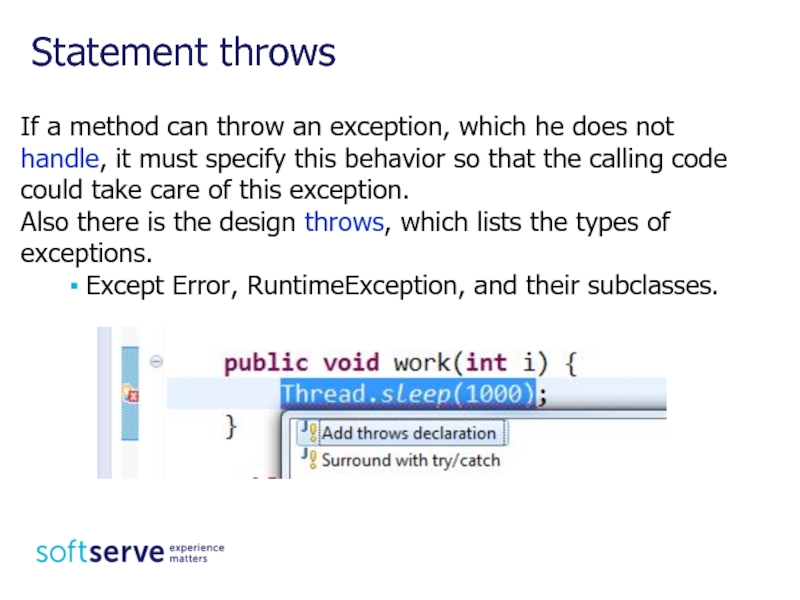
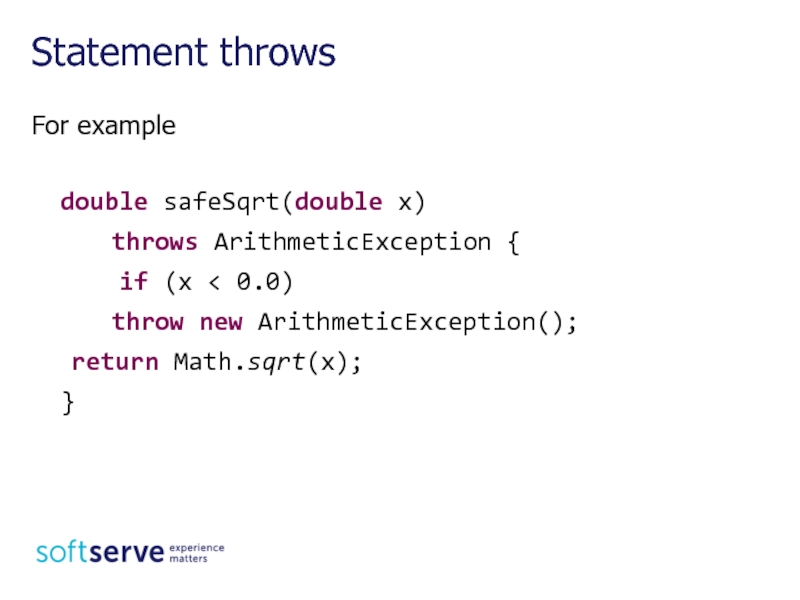
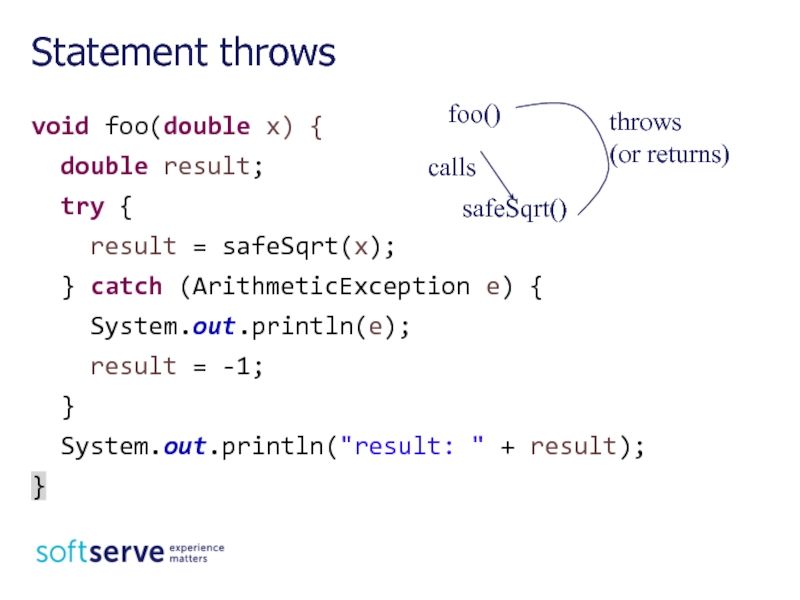
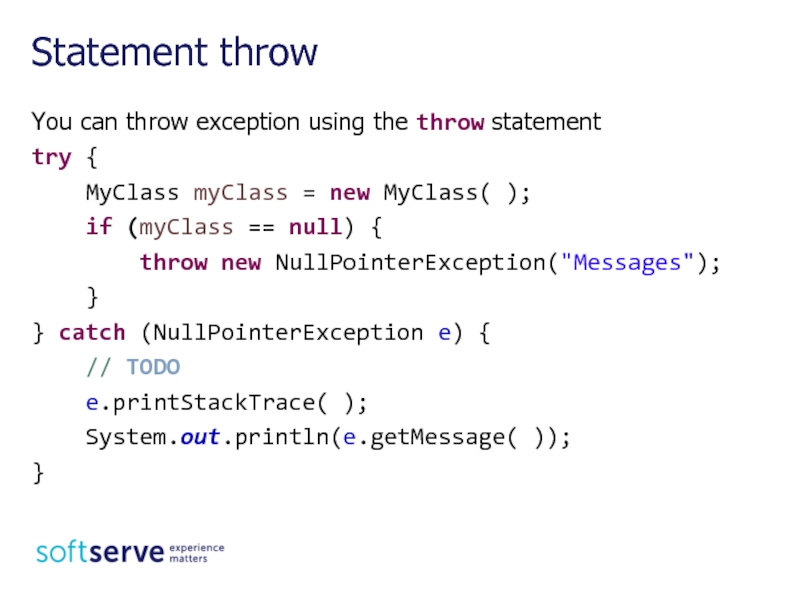
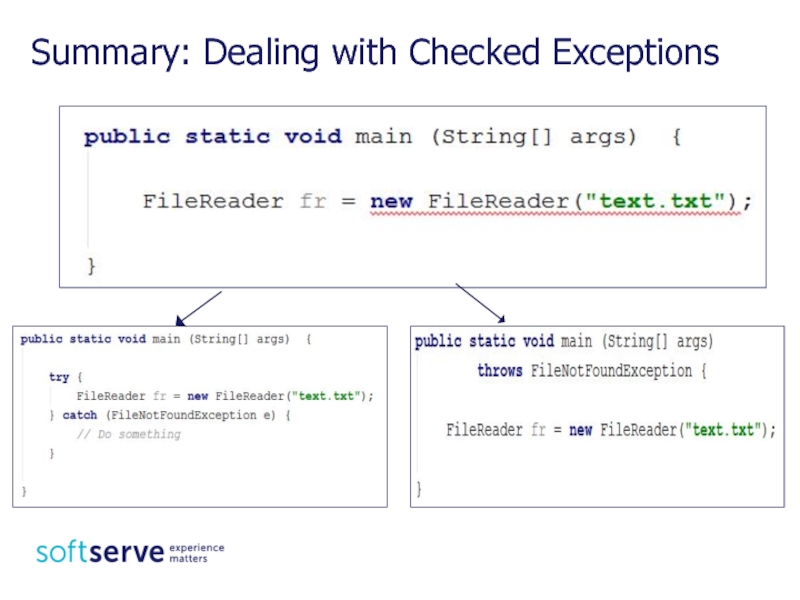
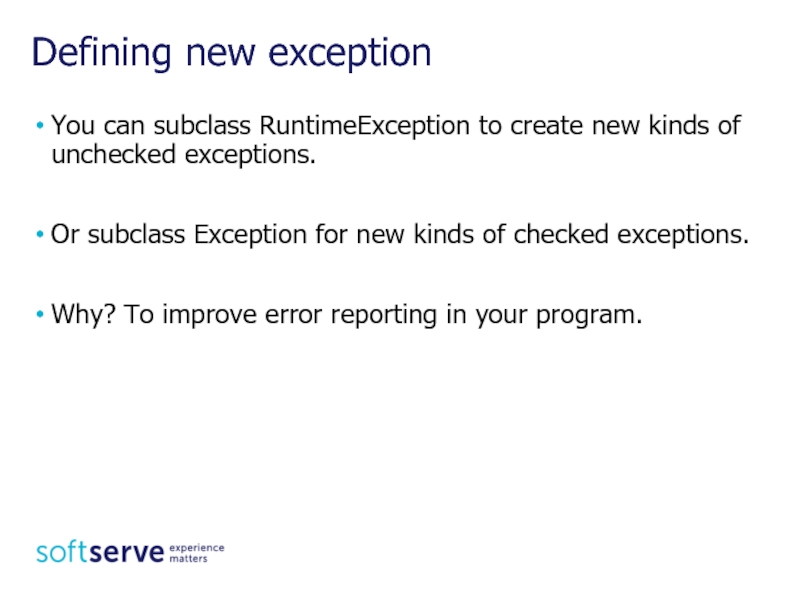
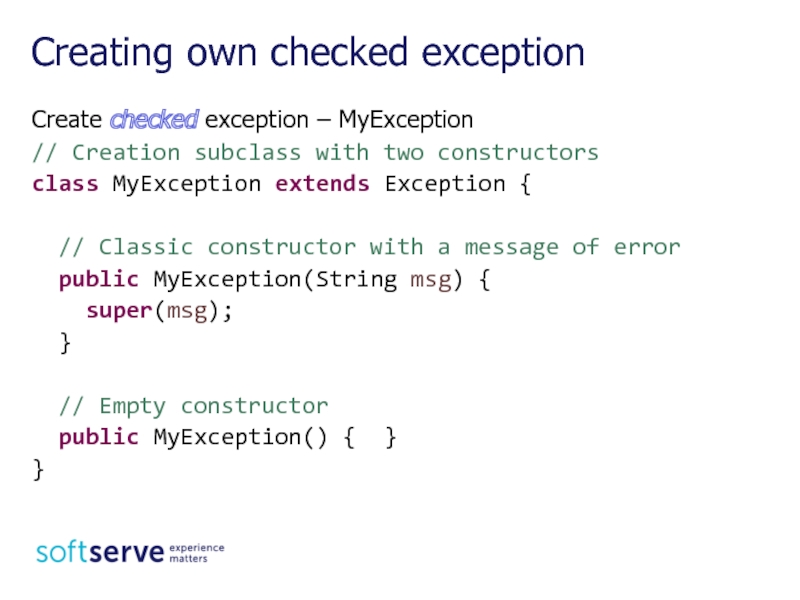
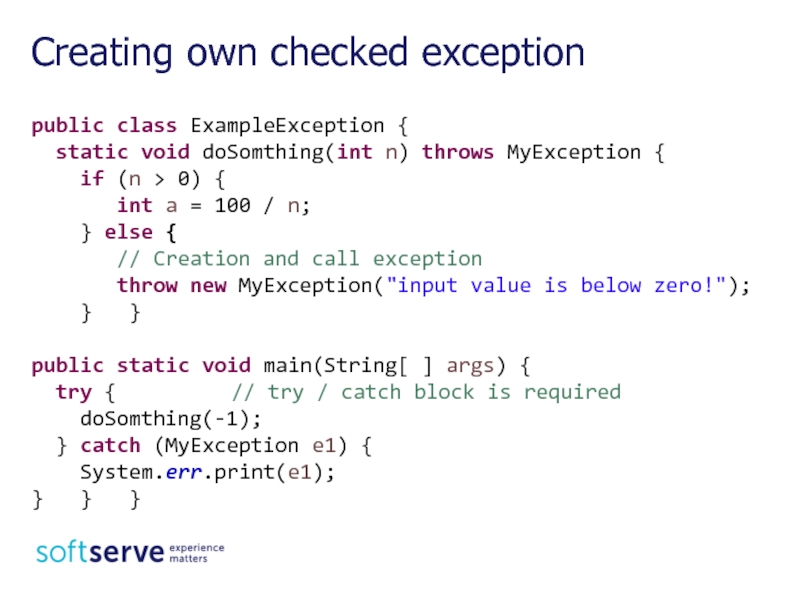
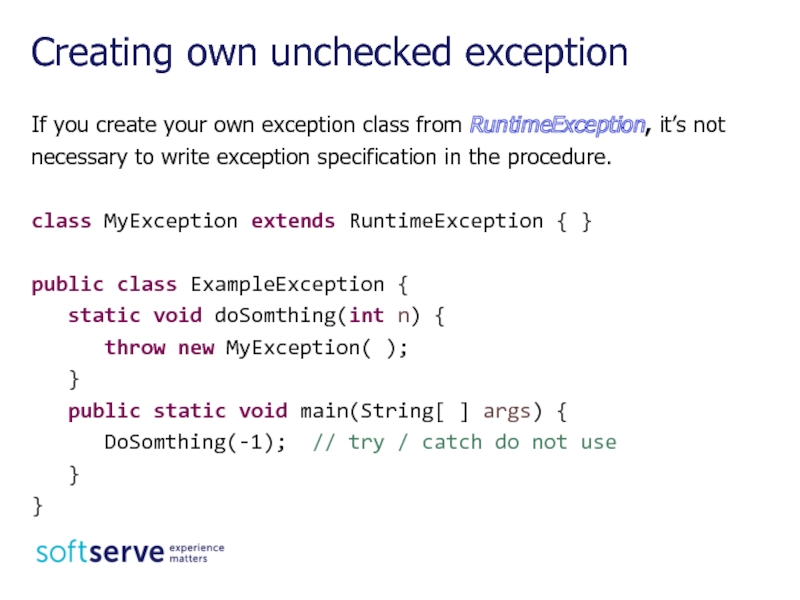
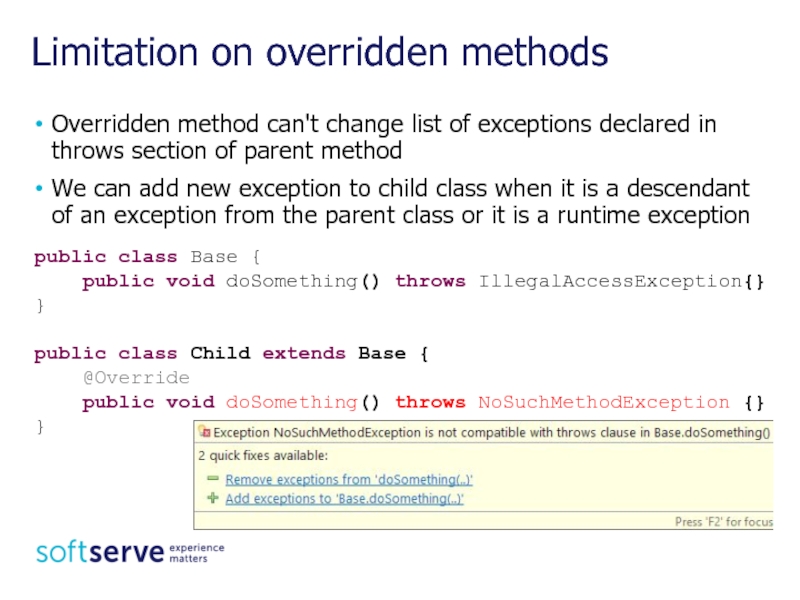
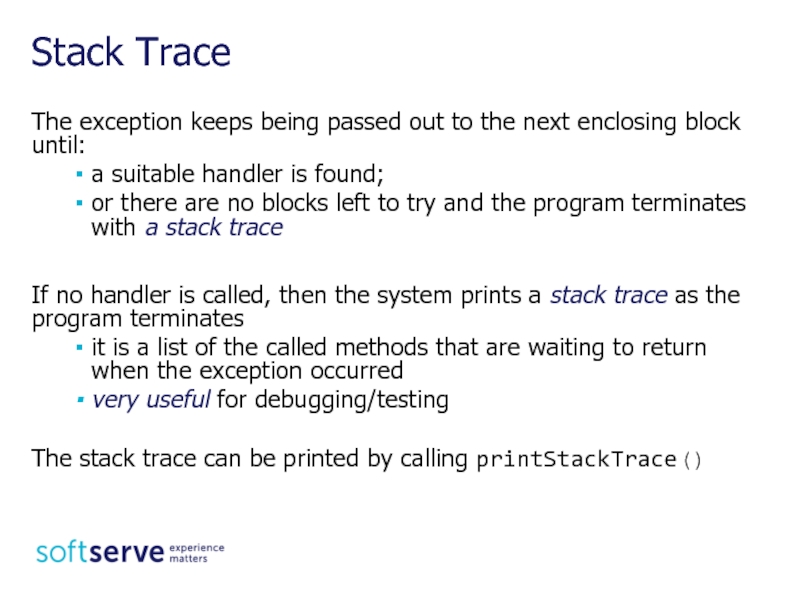
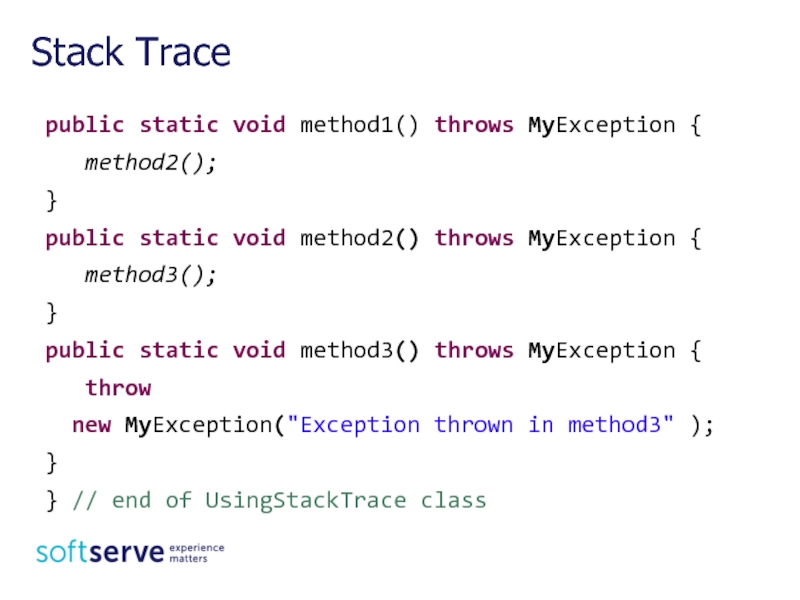
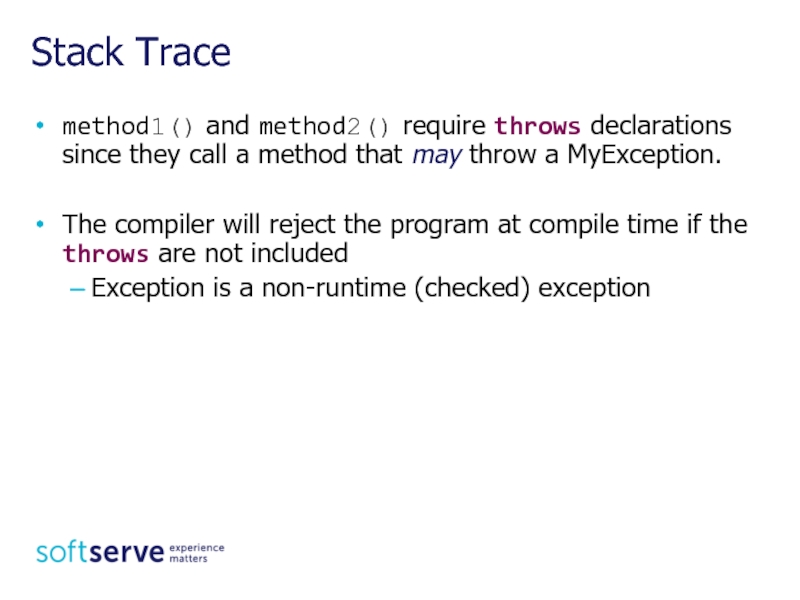
![// The getMessage and printStackTrace methods public static void main( String[] args) {](/img/tmb/4/342483/3a0271a73c5101c4bf98010a1857f5a6-800x.jpg)
